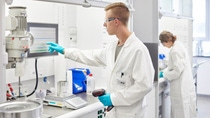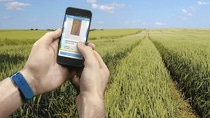Who we are
Digitalización en investigación y desarrollo
Nuestras competencias en investigación y desarrollo son líderes en la industria química. Nuestro objetivo es aprovechar y aprovechar esta fortaleza para desarrollar innovaciones junto con nuestros clientes. Una de las palancas clave para lograr este objetivo es la digitalización.
Las tecnologías digitales son indispensables para las operaciones diarias de I+D
La digitalización brinda a nuestros equipos de investigación y desarrollo oportunidades adicionales para implementar sus ideas creativas y colaborar intensamente con otros en todo el mundo. Aquí puede encontrar más información sobre cómo integramos las tecnologías digitales en las operaciones diarias y las convertimos en una parte integral del flujo de trabajo de cualquier proyecto:

¿Quriosity te produce curiosidad?
¿Calculando la estructura de polímero más prometedora a partir de miles de posibilidades? Esto es imposible para una computadora normal. Pero no es un problema para nuestra supercomputadora Quriosity, gracias a la potencia informática de decenas de miles de portátiles. Quriosity nos ayuda a descubrir relaciones previamente desconocidas, a avanzar en enfoques de investigación completamente nuevos y a reducir sustancialmente los tiempos de desarrollo. Por cierto, la supercomputadora recibió su nombre de nuestros colaboradores luego de un concurso de nombres en línea.
Con el aumento del uso de tecnologías digitales en investigación y desarrollo, estamos fortaleciendo la posición de BASF como la empresa más innovadora en la industria química global.









